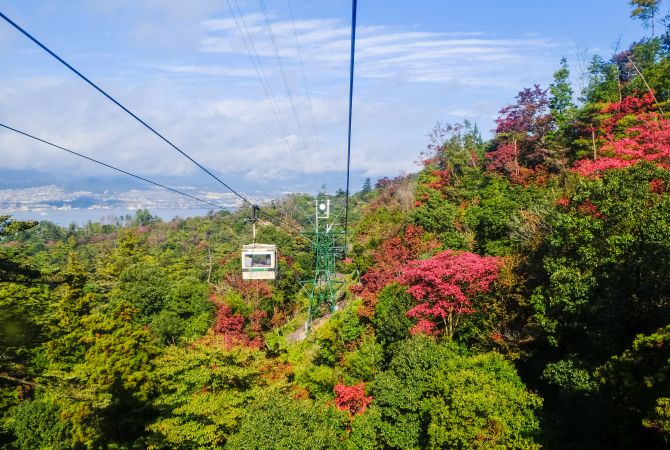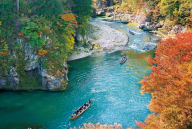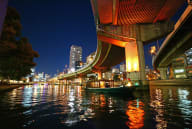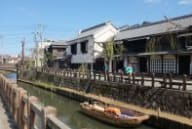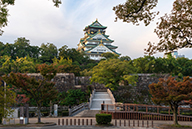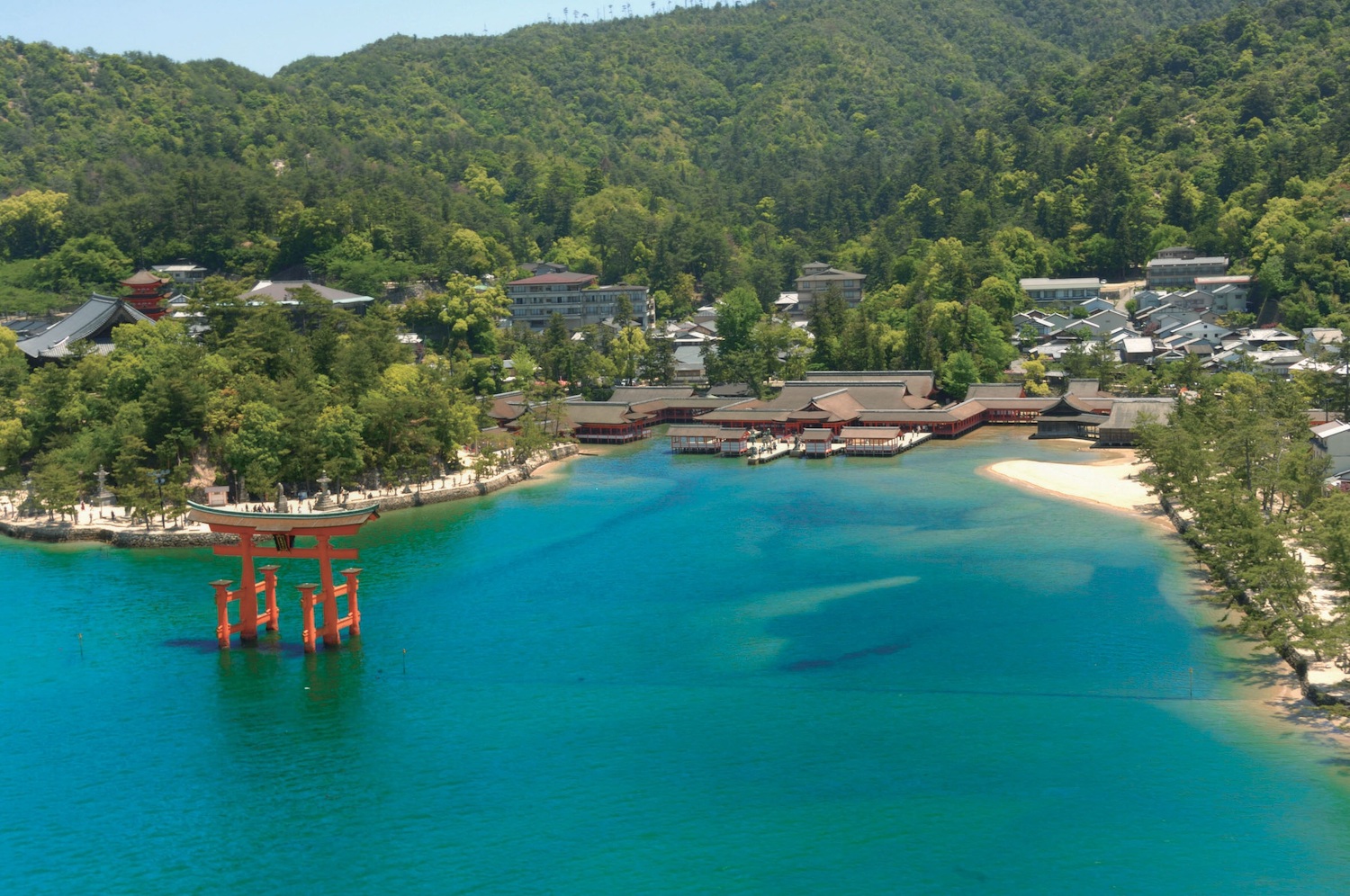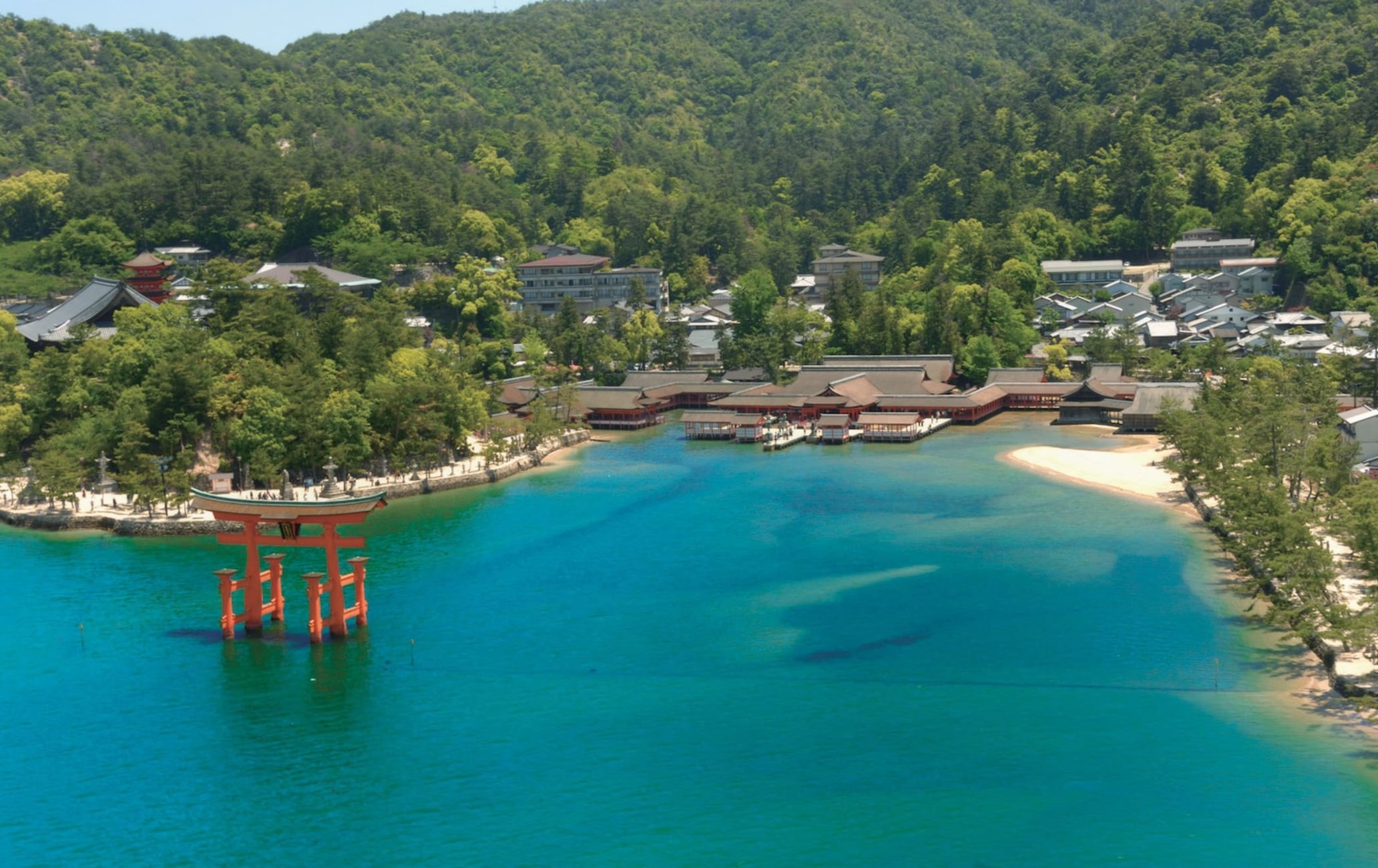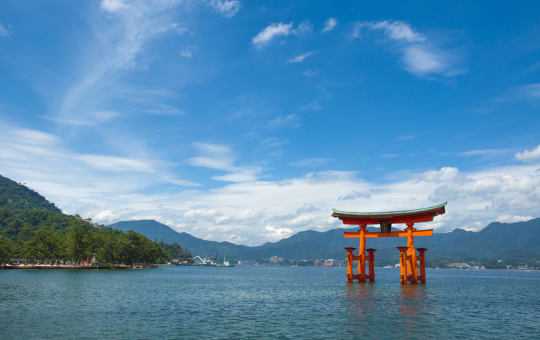A sanctuary for the spirit, floating on the tides
Itsukushima Shrine is located on Miyajima Island , near Hiroshima . It is said to have been built in 593. Although it has been rebuilt several times due to disasters, it still retains the appearance of the shrine built by Taira no Kiyomori, a famous military leader of the late Heian period (794-1185). It is one of the few shrines in Japan where wooden buildings stand on the sea.
Don't Miss
- The floating Otorii gate of Itsukushima Shrine, the symbol of Miyajima
- Cherry blossoms in spring, and colorful leaves in autumn
- The retro atmosphere of the townscape
How to Get There
The Miyajimaguchi passenger terminal is about a 5-minute walk from Miyajimaguchi Station. Access to Miyajima is about a 10-minute ferry ride. From the passenger terminal at Miyajima Pier, it is about a 10-minute walk to the shrine.
Quick Facts
The Otorii gate stands at 16 meters tall
The main pillar of the gate is made from camphor wood, which has a natural resistance to corrosion, even underwater

A spiritual sanctuary
The entire island has been worshipped by many as sacred. It is said that the people of the time considered the island awe-inspiring, so they built a shrine in a place where the tide ebbed and flowed to avoid damaging the sacred “body” of the island.

The offshore Otorii gate
The Otorii was built offshore from the shrine in 1875, and was the original entrance to the shrine. Worshippers would pass beneath the gate by boat on their way to Itsukushima Shrine.


A beautiful journey on the water
The ferry ride to the island offers views of Itsukushima Shrine from the calm sea, with Mt. Misen towering behind it. Ferries operate from morning to night.
Approaching the Otorii
At high tide, Itsukushima Shrine and the Otorii appear to float on the water, while at low tide the shrine's foundation and mud flats are exposed. At that time you can walk up to the Otorii gate, making for a great photo opportunity.
Mt. Misen, a World Heritage Site
In addition to its cultural and spiritual significance, Miyajima was registered as a World Cultural Heritage Site in 1996 in recognition of the primeval forests of Mt. Misen. There are numerous megaliths along the mountain trail and at the summit. From the top, you can see the beauty of the many islands dotting the Seto Inland Sea when conditions are clear.

